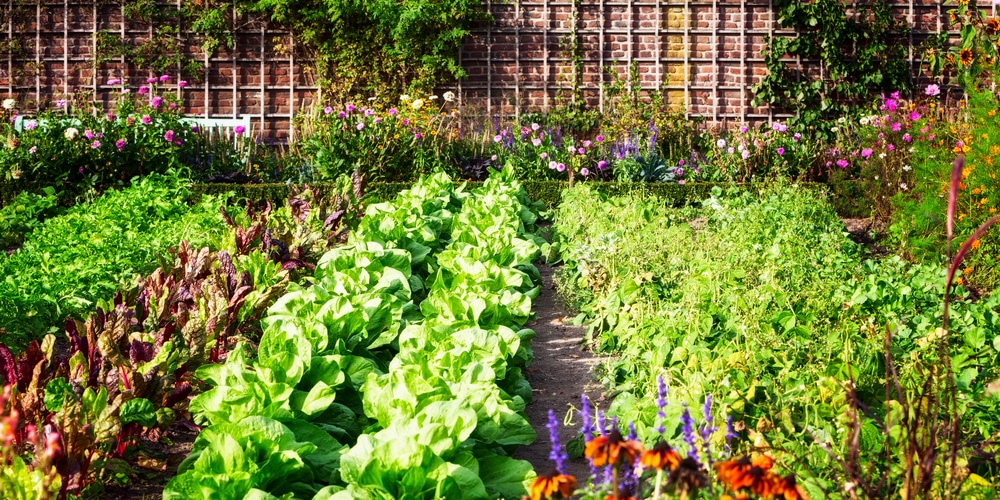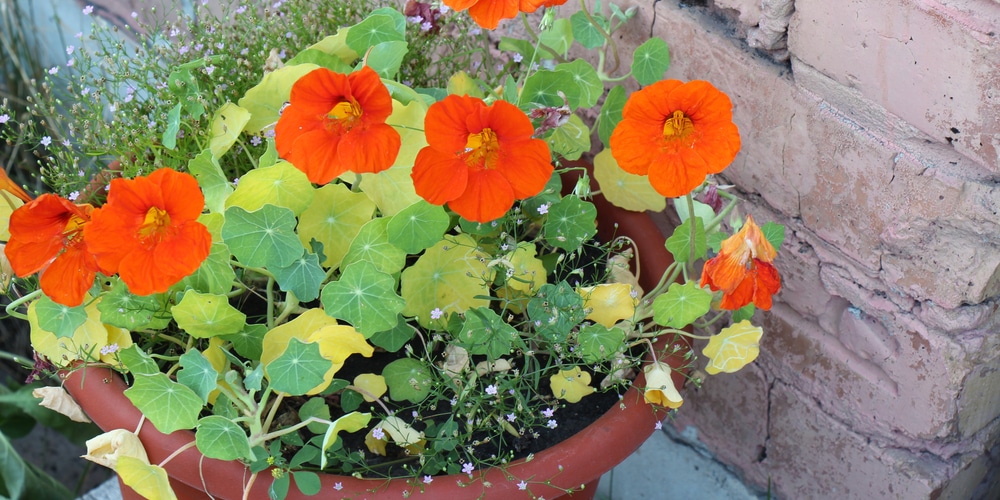Growing a perfect vegetable garden means finding the perfect spot for each type of plant. You need to take into account the amount of sunlight, water, and soil each plant needs in order to thrive.
However, no matter how much care you provide your vegetable garden, pests will always find a way to invade.
While there are different ways to keep pests out of your garden, many gardeners practice companion planting. This is when you plant certain types of plants next to each other to benefit both plants.
For example, planting nasturtiums next to your vegetables will not only add a splash of color to your garden but will also help keep pests away.
Nasturtium: Where to Place in Your Vegetable Garden
Oftentimes, nasturtiums are often placed in vegetable gardens because they’re known to help with pest control. These plants have the ability to trap aphids, whiteflies, and other destructive pests that could potentially ruin your entire crop. In addition to pest control, nasturtiums can also help improve the overall health of your plants.
As sun-loving plants, nasturtiums should be placed in an area of your garden that receives at least six to eight hours of sunlight each day. Although these plants will grow and survive in areas where it only gets 3-6 hours per day, they will not bloom as often.
With that being said, the best place for nasturtiums in your vegetable garden would be on the outskirts or in between other taller plants. By placing them in these areas, they will still receive the sunlight they need while also providing shade for other plants. Nasturtiums can also tolerate a wide range of soil types as long as it is well-draining.
Additionally, it’s best to place them near vegetables that are susceptible to aphids and other pests, such as cabbage, broccoli, tomatoes, and Brussels sprouts. Some gardeners also like to plant nasturtiums near beans and peas since they can help support these climbing plants.
Tips When Planting Nasturtiums as Companion Plants
Now that you know where to place nasturtiums in your vegetable garden, here are a few tips to keep in mind when planting them:
- Start by planting the seeds indoors, about six weeks before the known frost date.
- You’ll know it’s safe to transplant them outdoors when the temperatures are consistently above 60 degrees Fahrenheit.
- Nasturtiums can either be planted directly into the ground or in pots. If you’re transplanting them, make sure to dig a hole that’s twice the size of the plant’s root ball.
- Keep them beside vegetables that are susceptible to pests and aphids.
- Don’t forget to place them in an area that gets the most sunlight during the day. This is to ensure that they will bloom properly.
- Water them regularly, especially during the summer months when they are actively growing.
Bush vs. Climbing Nasturtiums
Will both types of nasturtiums help keep pests away from your vegetables?
The answer is yes! Whether it be a bush or a trailing nasturtium, both plants will help with pest control. However, many gardeners prefer to plant the bush variety since they are easier to take care of and don’t require as much maintenance.
Bush types should be placed 18-24 inches apart from each other while climbing nasturtiums should be placed 24-36 inches apart. Ideally, place them on your vegetable garden’s outskirts or between other taller plants.
If you decide to plant nasturtiums in your vegetable garden, make sure to keep an eye on them. These plants are known for being fast growers and can quickly take over an area if left unchecked. Regularly trim and deadhead the plants to prevent them from becoming too invasive.
Where to Plant Nasturtium in Vegetable Garden: Final Thoughts
With their vibrant flowers and pest-repelling abilities, nasturtiums make the perfect addition to any vegetable garden. Caring for these companion plants is relatively easy, and they will provide your garden with beautiful blooms all season long, not to mention the added bonus of keeping pests at bay.
Related Article: Tomato Companion Flowers

